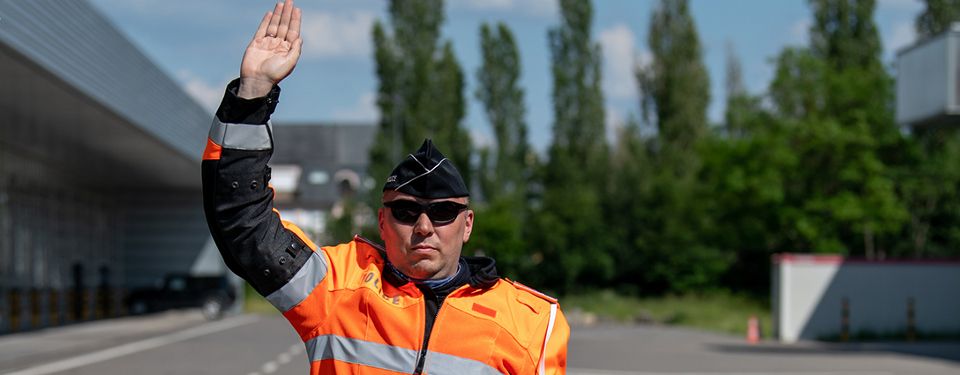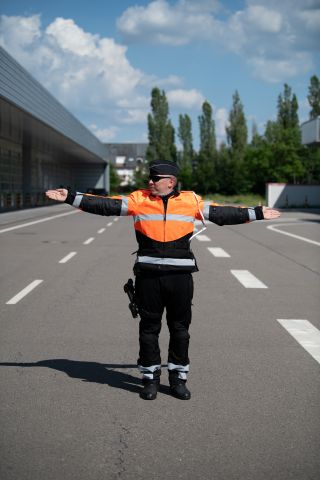
During interventions, after accidents or other traffic disturbance, police officers may need to give traffic instructions to road users, which must be obeyed.
Here are the 3 most common instructions.
Road users who fail to comply with Police traffic officers' orders are liable for a fine of €145 and the loss of 2 points from their driving licence. (The loss of a set number of points applies automatically depending on the type of offence committed.)



These are also to be considered as orders: orders given verbally by officers as well as signs on the vehicles used in such interventions, instructing drivers to follow said vehicles.
Repeated whistle blasts indicate that a regulatory offence has been committed and mean: "Compulsory stop".
Police officers' orders prevail over the normal traffic rules as well as over traffic lights and road signs.

